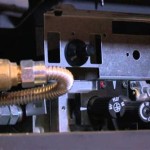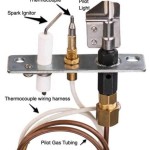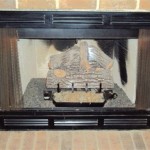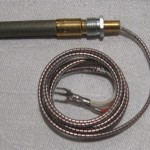EPA Certified Fireplace Wood: Understanding Clean Burning and Environmental Benefits
The warmth and ambiance of a wood-burning fireplace offer a time-honored appeal. However, traditional wood burning can contribute significantly to air pollution, releasing particulate matter and other harmful emissions into the atmosphere. As a result, the Environmental Protection Agency (EPA) has established stringent regulations to mitigate these environmental impacts. EPA-certified fireplace wood represents a significant step towards cleaner burning and a more sustainable approach to enjoying the benefits of a wood-burning fireplace or stove.
This article provides a comprehensive overview of EPA-certified fireplace wood, detailing its benefits, the certification process, proper usage, and its role in promoting cleaner air quality. The objective is to equip consumers with the knowledge necessary to make informed decisions regarding their wood-burning practices and understand the importance of adhering to EPA guidelines.
What is EPA Certified Fireplace Wood?
EPA-certified fireplace wood is firewood that has been processed in a manner that reduces its moisture content to a specific level, typically below 20%. This lower moisture content is crucial because it allows the wood to burn more efficiently and completely, resulting in significantly reduced emissions. The EPA establishes standards for wood stoves, fireplace inserts, and other wood-burning appliances, as well as for the wood itself. Certification ensures that the wood meets these standards, contributing to cleaner burning and reduced air pollution.
Traditional, unseasoned firewood often contains a high moisture content, sometimes exceeding 50%. When this wood is burned, much of the energy is used to evaporate the water, rather than producing heat. This incomplete combustion results in the release of smoke, creosote, and particulate matter, all of which contribute to air pollution and can pose health risks. EPA-certified wood, on the other hand, burns hotter and cleaner, minimizing these harmful emissions.
The certification process involves rigorous testing to ensure that the wood meets the EPA's established criteria. This testing typically involves measuring the moisture content, species of wood, and the emissions produced during burning. Certified wood is often kiln-dried or air-dried under controlled conditions to achieve the desired moisture level. The end product is firewood that offers a more environmentally friendly and efficient burning experience.
Furthermore, the EPA certification process ensures consistency and quality control. Consumers can be confident that when they purchase EPA-certified wood, they are getting a product that has been verified to meet specific standards for moisture content and burning efficiency. This contrasts sharply with purchasing unseasoned or improperly dried wood, where the quality and burning characteristics can vary widely.
Benefits of Using EPA Certified Fireplace Wood
The advantages of using EPA-certified fireplace wood extend beyond simply reducing emissions. It encompasses improved heating efficiency, reduced creosote buildup in chimneys, and a healthier indoor and outdoor environment. These benefits contribute to both individual cost savings and broader environmental protection.
Reduced Air Pollution: The primary benefit of using EPA-certified wood is the significant reduction in air pollution. Lower moisture content leads to more complete combustion, resulting in less smoke and particulate matter being released into the atmosphere. This is particularly important in areas where wood burning is common, as it can help to improve air quality and reduce the incidence of respiratory problems.
Increased Heating Efficiency: Drier wood burns hotter and more efficiently. This means that less wood is needed to generate the same amount of heat compared to using unseasoned wood. This increased efficiency translates into cost savings for the consumer, as less wood needs to be purchased and burned to maintain a comfortable temperature.
Reduced Creosote Buildup: Creosote is a flammable byproduct of incomplete combustion that can accumulate in chimneys and stovepipes. Using wet or unseasoned wood greatly increases creosote buildup, which poses a significant fire hazard. EPA-certified wood, with its lower moisture content, burns cleaner and reduces the formation of creosote, minimizing the risk of chimney fires and the need for frequent chimney cleaning.
Longer Appliance Lifespan: The cleaner burning of EPA-certified wood can also extend the lifespan of wood-burning appliances. Less creosote and ash buildup means less corrosion and wear on the appliance, reducing the need for repairs and replacements. This can save consumers money in the long run and ensure that their wood stoves or fireplaces operate safely and efficiently.
Environmental Responsibility: Choosing EPA-certified wood demonstrates a commitment to environmental stewardship. By reducing emissions, consumers contribute to cleaner air and a healthier environment. This practice aligns with broader efforts to promote sustainable wood-burning practices and minimize the negative impacts of wood combustion.
Identifying and Using EPA Certified Fireplace Wood
Knowing how to identify and properly use EPA-certified fireplace wood is crucial to maximizing its benefits. Consumers need to be able to distinguish certified wood from uncertified wood and understand the best practices for storing and burning it. This section provides guidance on these key aspects.
Looking for the EPA Certification Label: The most reliable way to ensure that firewood is EPA-certified is to look for the official EPA certification label. This label typically includes information about the wood's moisture content, species, and the certifying agency. The presence of this label provides assurance that the wood has been tested and meets the EPA's standards.
Checking Moisture Content: Even with certification, it's helpful to check the moisture content of the wood yourself. A moisture meter can be used to measure the moisture level directly. Ideal moisture content for EPA-certified wood should be below 20%. This confirms that the wood is indeed dry and ready for efficient burning.
Proper Storage: Proper storage is essential for maintaining the dryness of EPA-certified wood. The wood should be stored in a dry, well-ventilated area, away from direct contact with the ground. Covering the wood with a tarp or storing it in a woodshed can help to protect it from rain and snow, preventing it from reabsorbing moisture. Stacking the wood loosely allows for air circulation, promoting further drying and preventing mold growth.
Burning Practices: Even with EPA-certified wood, proper burning practices are crucial for maximizing efficiency and minimizing emissions. Start with a small fire and gradually add more wood as needed. Avoid overloading the firebox, as this can lead to incomplete combustion and increased emissions. Ensure that the appliance is properly maintained and that the chimney is regularly cleaned to prevent creosote buildup.
Choosing the Right Firewood: Different types of wood have different burning characteristics. Hardwoods, such as oak, maple, and ash, are generally denser and burn longer than softwoods, such as pine and fir. While EPA certification ensures that all certified wood meets specific standards, choosing the right type of wood for the appliance and desired heat output can further enhance the burning experience. Consider the heating needs and appliance requirements when selecting firewood.
Following Local Regulations: It is extremely important to be aware of and comply with local regulations regarding wood burning. Many municipalities have ordinances that restrict wood burning during periods of high air pollution or require the use of certified wood. Adhering to these regulations helps to protect air quality and prevent enforcement actions.
Seasoning Your Own Wood: While purchasing EPA-certified wood offers convenience and assurance, seasoning your own wood is a viable option for some homeowners. This requires cutting and splitting the wood well in advance of burning it, typically six months to a year, and storing it properly to allow it to dry naturally. However, it's crucial to monitor the moisture content regularly to ensure that it reaches the desired level before burning.
Ultimately, the use of EPA-certified fireplace wood represents a responsible and effective way to enjoy the warmth and ambiance of a wood-burning fire while minimizing its environmental impact. By understanding the benefits, certification process, and proper usage practices, consumers can contribute to cleaner air and a more sustainable wood-burning experience.

Superior White Stacked Epa Certified Wood Fireplace Wct6940 North Country Fire

Epa Certified Wood Burning Fireplaces Canadian Chimney

Wood Burning Epa Certified Fireplace With Powerful Catalytic Heating By Superior Wrt4826

Montecito Estate Epa Certified Wood Burning Fireplace F2845 Embers Home

Wood Burning Epa Certified Fireplace With Powerful Catalytic Heating By Superior Wrt4826

Superior Wct6920 Epa Certified Fireplace Traditional White Stacked Fireplaces Usa

What Does Epa Certified Mean Westhampton Beach Ny Stove Fireplace

Superior White Stacked Cf Trad Epa Cert Wood Fireplace Wrt3920 North Country Fire

Epa Iii Certified Wood Burning Superior Signature Series Fireplace Wct6940

Love Burning Wood In Your Fireplace Or Stove Make Sure It S Epa Certified Forshaw Of St Louis
Related Posts








